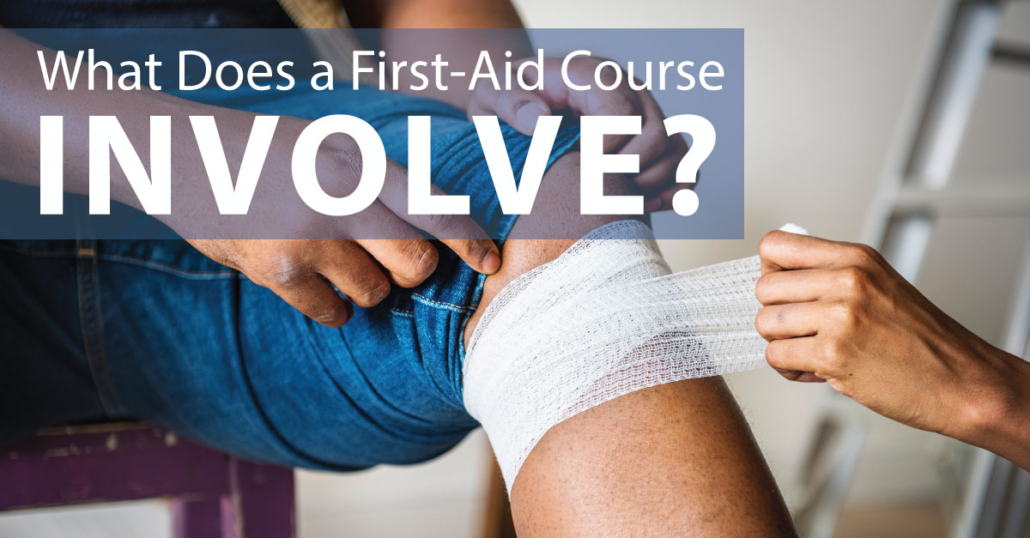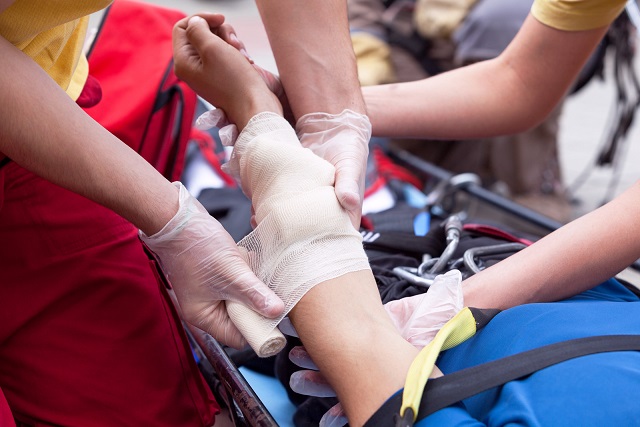Introduction
In our rapidly transforming globe, the importance of emergency treatment can not be understated. Whether in a corporate atmosphere, university, or at home, understanding exactly how to respond effectively during a clinical emergency can conserve lives. However, with excellent responsibility comes the demand for understanding the guidelines governing emergency treatment methods. This post aims to offer a comprehensive overview of emergency treatment guidelines that every company ought to know. We will certainly look into numerous facets-- The original source from necessary qualifications to the subtleties of mouth-to-mouth resuscitation training courses-- ensuring you leave furnished with understanding and confidence.
Table of Contents
Understanding Emergency treatment Regulations- 1.1 Relevance of First Aid Training 1.2 Legal Effects of First Aid
- 2.1 Sorts of First Aid Courses 2.2 Selecting the Right Training Course for You
- 3.1 Understanding CPR Techniques 3.2 Value of CPR Certification
- 4.1 Benefits of Combined Training 4.2 How to Locate an Integrated Course
- 5.1 That Needs an Emergency Treatment Certificate? 5.2 Legitimacy and Renewal of Certifications
- 6.1 National Security Council (NSC) 6.2 American Red Cross Standards
- 7.1 OSHA Guidelines for Office Safety 7.2 Company Obligations in First Aid Training
- 8.1 Standard Action in Emergency Response 8.2 Duty of an Initial Responder
- 9.1 Common Misunderstandings about Emergency treatment 9.2 Conquering Obstacles to Training
- 10.1 Virtual Learning Opportunities 10.2 Developments in First Aid Equipment
Understanding Emergency treatment Regulations
Importance of Emergency treatment Training
First aid training is not simply a valuable skill; it's a vital part of our social material that empowers people to act emphatically during emergencies.
- Life-Saving Skills: Recognizing fundamental emergency treatment strategies can considerably boost survival rates in emergencies. Confidence Building: Individuals learnt emergency treatment usually really feel a lot more certain and ready when confronted with medical situations.
Legal Ramifications of First Aid
Understanding the lawful structure surrounding first aid is crucial for any individual providing aid during emergencies.

- Good Samaritan Laws: The majority of states have laws securing those who render help voluntarily from legal liability, as long as their actions are affordable and planned to help. Negligence Considerations: If a trained company acts recklessly or fails to carry out necessary life-saving procedures, they can encounter lawful consequences.
First Aid Surges Overview
Types of Emergency treatment Courses
There are various sorts of first aid training courses available, each tailored to satisfy different demands:
- Basic Life Support (BLS): Ideal for medical care professionals needing sophisticated skills. Standard First Aid: Covers essential skills appropriate for laypersons and non-medical personnel. Advanced Cardiac Life Assistance (ACLS): Targets healthcare providers working with critically unwell patients.
Choosing the Right Program for You
When picking a training course, consider your objectives and scenarios:
- Are you seeking certification for office compliance? Do you require skills specific to childcare or senior assistance?
Researching local suppliers can help improve your selection based upon location and solutions offered.
CPR and Its Significance
Understanding mouth-to-mouth resuscitation Techniques
Cardiopulmonary resuscitation (MOUTH-TO-MOUTH RESUSCITATION) is among the most vital skills found out in any type of first aid course:

- Compression Technique: Efficient chest compressions can keep blood moving to vital organs until professional help arrives. Rescue Breaths: While much less highlighted currently as a result of new guidelines, rescue breaths continue to be an important component of standard CPR training.
Importance of CPR Certification
Obtaining qualification through acknowledged companies ensures expertise in doing mouth-to-mouth resuscitation:
- Many companies need current accreditation as component of their security protocols. It increases overall self-confidence when encountering possible heart emergencies.
First Help and CPR Training Course Integration
CPR Course MelbourneBenefits of Combined Training
Taking an incorporated first aid and CPR course offers numerous benefits:
- It improves training by covering both areas simultaneously. Participants obtain detailed understanding applicable across numerous scenarios.
How to Find an Integrated Course
Searching for incorporated training programs requires some strategic preparation:
- Look for local recreation center or healthcare facilities supplying such courses. Online systems may likewise offer digital options customized toward hectic professionals.
First Aid Certification Requirements
Who Requirements a First Aid Certificate?
Various industries require qualification from staff members:
- Educational establishments often require instructors and instructors to hold legitimate certificates. Healthcare setups demand continuous training among personnel members.
Validity and Revival of Certifications
Most qualifications have expiry dates:
- Regularly restoring qualifications makes sure that service providers remain up-to-date with present practices.
Regulatory Bodies Governing First Aid
National Safety Council (NSC)
The NSC plays a crucial duty in establishing criteria for safety training throughout the United States:
- They give sources, products, and support for both teachers and learners alike.
American Red Cross Standards
The American Red Cross uses extensive training programs lined up with national standards:
- Their educational program includes hands-on method, ensuring individuals develop sensible abilities alongside academic knowledge.
Workplace Laws on First Aid
OSHA Guidelines for Office Safety
The Occupational Safety and security and Wellness Management (OSHA) lays out assumptions pertaining to work environment safety measures:
|Demand|Summary|| -------------|-------------|| Schedule|Employers should make sure access http://cashvrzu574.theglensecret.com/what-to-anticipate-from-your-first-aid-course-experience to appropriate first-aid sources in any way times|| Trained Personnel|Designated staff members should be learnt fundamental emergency treatment|
Employer Obligations in First Aid Training
Employers bear considerable duties concerning worker safety:
- Providing proper training sessions regularly aids decrease workplace injuries.
Emergency Feedback Protocols
Basic Steps in Emergency situation Response
A reliable emergency feedback method can significantly boost results throughout dilemmas:
Assess the situation safely. Call emergency situation services if needed. Provide required treatment until professional aid arrives.Role of an Initial Responder
First responders play an important role within emergency situations by supplying timely support while awaiting advanced clinical intervention:
- Their timely action typically makes a substantial difference between life and fatality scenarios.
Challenges in Implementing Emergency treatment Training
Common Mistaken beliefs concerning First Aid
Misunderstandings surrounding first aid can hinder effective actions throughout emergency situations:
Myth vs Fact Table
|Misconception|Reality|| ----------------------------------|------------------------------------------|| Only medical care specialists need to administer emergency treatment|Any individual can learn standard methods|| Utilizing an AED is risky|AEDs are designed for public use|
Overcoming Barriers to Training
Several obstacles exist that may hinder individuals from seeking emergency treatment programs;
Key Barriers
- Time Restrictions: Active routines make it tough for many individuals to find time for training sessions. Financial Limitations: Price might discourage interested prospects from getting involved; nonetheless, lots of companies offer subsidized programs or grants particularly aimed at giving financial relief.
Future Patterns in First Aid Training
Virtual Understanding Opportunities
With modern technology advancing swiftly, on-line systems have actually obtained popularity among learners seeking adaptable choices;
- Real-time simulations permit participants to involve actively without requiring physical presence at typical places; This strategy improves ease of access while suiting varied understanding styles!
Innovations in First-Aid Equipment
Emerging technologies are transforming exactly how we come close to first-aid preparation;
Examples Include
- Smart Plasters-- equipped sensors monitor recovery progress! Mobile Apps-- using guidance based upon individual input relating to symptoms!
FAQs Concerning Understanding First-Aid Regulations
Q1: What is consisted of in a typical first-aid course?
A regular first-aid course covers subjects such as injury treatment, crack management, shock therapy, choking treatments, along with mouth-to-mouth resuscitation strategies tailored towards different age groups!
Q2: Just how frequently do I require to renew my CPR certification?
A lot of organizations advise renewing your accreditation every two years; remaining knowledgeable makes certain reliable responses throughout emergencies!
Q3: Can I take an online first-aid course?
Absolutely! Numerous reliable companies offer online options enabling students adaptability while keeping high-quality criteria through interactive content!
Q4: Exists any age requirement for taking these courses?

Q5: How do I select in between different carriers supplying comparable courses?
Check out reviews/testimonials from previous participants together with checking certification condition before making decisions; this will make sure high quality education provided meets sector standards!
Conclusion
In recap-- making sense outta policies surrounding crucial locations like 'first-aid' & & 'MOUTH-TO-MOUTH RESUSCITATION' is fundamental not just expertly however directly as well! As seen throughout this article-- numerous factors add in the direction of making sure correct responsiveness during clinical emergencies consisting of understanding needed accreditations-- in addition to acknowledging challenges faced whilst applying effective programs within community/workplace settings alike! By spending time/resources into acquiring effectiveness through relevant training courses-- you'll be better positioned than in the past-- should destiny offer its unpredictability knocking at your door! Constantly keep in mind-- the ability you possess today might possibly save someone else's tomorrow!